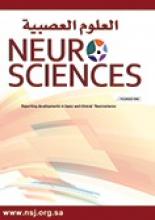Abstract
OBJECTIVE: To investigate characteristics of circadian rhythm in intracerebral hemorrhage before death.
METHODS: This retrospective study was carried out from September 2002 to February 2009. One hundred and twenty-two dead cases with intracerebral hemorrhage(ICH) were collected. The study was carried out in the Department of Neurosurgery in The Second Affiliated Hospital of Guangdong Medical College, Zhanjiang, Guangdong, China. Blood pressure (BP) and heart rate (HR) were recorded every half-hour during the 72 hours before death. Data of BP andHR before deaths were divided into 3 time periods, namely, period A (72-48 hours to death), period B(48-24 hours to death), and period C (24 hours to death). Data from the 3 periods were analyzed using the Cosinor method to determine whether circadian rhythm was present or absent. The cases were divided into a present and absent group after Cosinor analysis. Prognostic factors in the 2 groups were analyzed by Student’s t-test and Pearson’s chi-squared test.
RESULTS: Significant differences in prognostic factors between the 2 groups were not found. When circadian midline-estimating statistic of rhythms over the 3 periods were compared, there were no significant differences. However, when circadian amplitudes over the 3 periods were compared, the amplitudes during period C were significantly lower than period A or B(p<0.001). The percentage of cases in the absent and present groups was significantly different (p<0.001) over the 3 periods.
CONCLUSION: As an independent factor, circadian variation could predict death in patients with ICH.
- Copyright: © Neurosciences
Neurosciences is an Open Access journal and articles published are distributed under the terms of the Creative Commons Attribution-NonCommercial License (CC BY-NC). Readers may copy, distribute, and display the work for non-commercial purposes with the proper citation of the original work.






